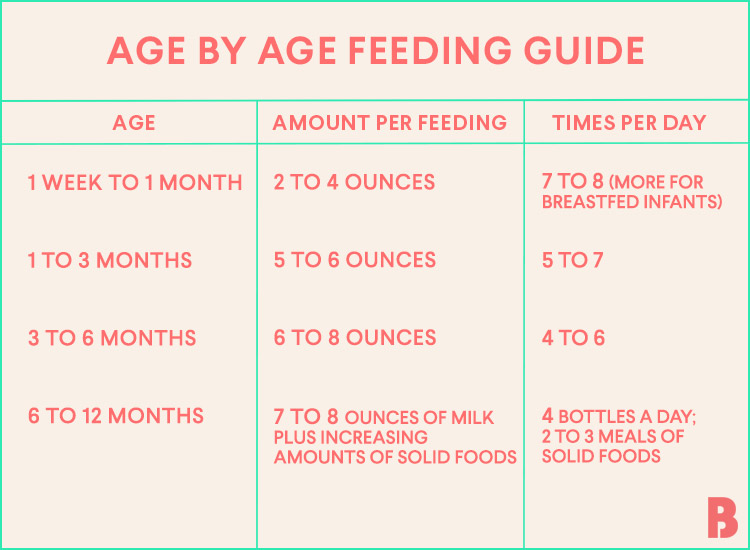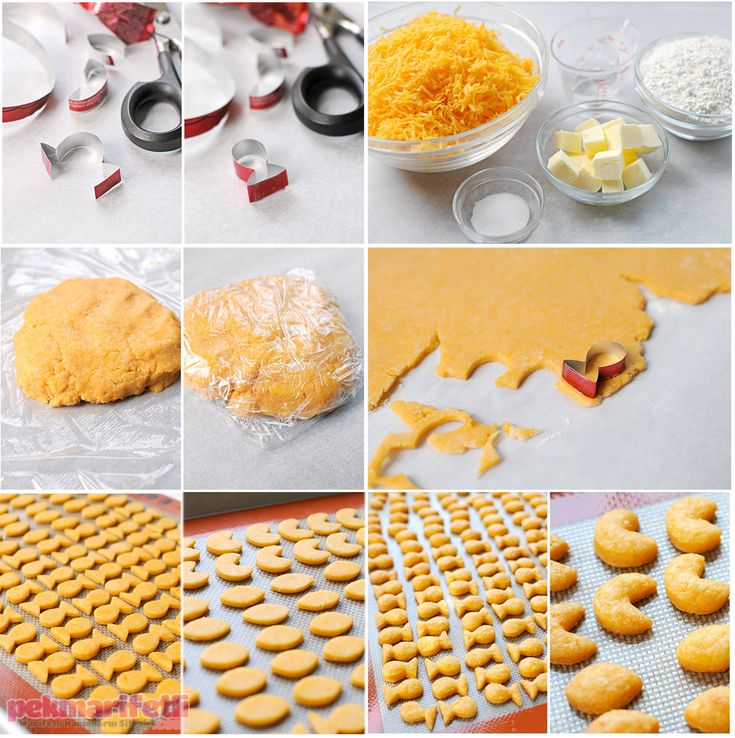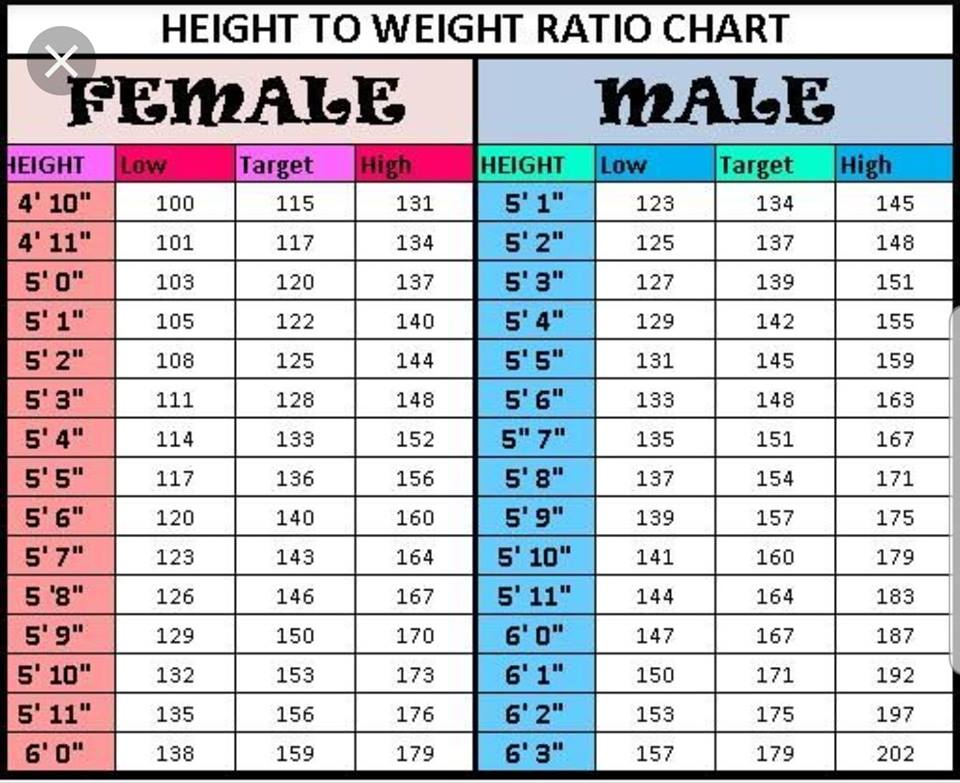When can i feed my baby bread
When to Introduce, Types, Baby-Led Weaning
“Our daily bread.” “Let’s break bread.” “The best thing since sliced bread.” Ever notice how many idioms revolve around bread?
In Western culture, this simple loaf of wheat or other grains has been a dietary staple for centuries. In fact, historians believe bread has been around since the ancient Egyptian era.
If you have an infant, you may be wondering when your child should continue the centuries-long trend of bread consumption.
Or perhaps you’ve wondered whether they should eat bread at all. With the rise of low carb and gluten- or grain-free diets, bread has certainly taken a hit in popularity in recent years.
For the record, bread is generally safe and healthy for babies to eat. Here’s what you need to know about when and how to feed it to your little one.
As a parent to your precious kiddo, you likely have safety top of mind at pretty much all times. (So many choking hazards! So many things to childproof!)
Food is one of the many areas where safety matters.
When feeding your baby bread, you’ll want to be aware of a few factors. First — and this is kind of counterintuitive — it’s actually the softer, chewier breads that can sometimes pose more problems for little eaters.
Breads with a softer consistency, like white sandwich bread, have a tendency to gum up into an un-swallowable ball in a baby’s mouth. This can lead to gagging or choking — or a spit-out pile of soggy bread gloop on the high chair tray.
To help a soft bread go down easier, try toasting it. This will remove some of its moisture so it’s less likely to stick together in baby’s mouth.
On the other side of the bread spectrum, a hard, crusty bread can be difficult for babies who have very few teeth to gnaw through it with.
Though you might try offering a bread crust to your child so they can experience its texture, they may not get very far on actually consuming it, depending on their chewing skills.
For this reason, crusty breads are best for older babies with more chewing experience. For babies just starting out with solids, stick to breads with middle-of-the-road density to minimize the risk of choking.
For babies just starting out with solids, stick to breads with middle-of-the-road density to minimize the risk of choking.
There’s no perfect schedule for when to introduce bread or toast to your baby.
The Academy of Pediatrics (AAP) gives the go-ahead for starting a variety of solid foods from around 6 months old — and bread can be included from this age.
When you do decide to debut a bit of sourdough or ciabatta, just be sure it’s not accompanied by other foods new to your child.
The Centers for Disease Control and Prevention (CDC) recommends introducing just one food at a time to your baby, waiting 3 to 5 days between new menu items.
If your child happens to have a negative reaction to something they ate, this allows you to identify the culprit more easily.
Baby-led weaning involves offering small pieces of food to your child, allowing them to feed themselves rather than be spoon-fed. As your kiddo approaches older babyhood, this approach can help them transition to table foods with more confidence and independence.
Baby-led weaning is associated with a number of benefits, like promoting more nutritious eating later in life and helping kids maintain a healthy weight.
Bread makes a super easy go-to when starting out with baby-led weaning.
Simply cut or tear a slice of bread into bite-size pieces, place them on the high chair, and let your child pincer-grasp them to their mouth. (Again, to make bread less gummy, toast it first.)
As always, with bread or any other foods your child self-feeds, stay close by as they eat so you can monitor for signs of choking.
100 percent whole wheat bread
Looks can be deceiving. Sometimes breads that use the words “whole wheat” in their name are not, in fact, made with just whole wheat flour.
To be sure you’re getting the whole high-fiber package for your baby, choose breads that explicitly state they’re made with 100 percent whole wheat or other whole grains.
Our pick: Whole Foods Organic Whole Wheat Sandwich Bread
Sprouted grain bread
For extra fiber and nutrients in your child’s diet, check out sprouted grain bread.
These loaves may contain a wide variety of grains harvested at the point of sprouting. Grains might include millet, spelt, kamut, or barley.
Many brands also include high-fiber, high-protein legumes like lentils and soy beans.
Our picks: Food for Life Ezekiel 4:9 Sprouted Grain Bread and Simple Truth Organic Sprouted Grain and Legume Bread
Sourdough or other hearty white
Soft white breads may turn gummy in baby’s mouth, but the texture of sturdier options like sourdough or rustic white bread will hold up far better.
Our pick: Dave’s Killer Bread White Bread Done Right
Breads with nuts and seeds
Tasty and nutritious though nuts and seeds may be in bread, they’ll have to wait until baby is a bit older.
Loaves that contain large chunks of nuts or have sunflower seeds studded around their exterior, for example, pose a choking hazard for very young children.
Breads with honey or lots of added sugar
The advice that goes for grown-ups goes for babies, too: Keep added sugar to a minimum. (Yep, it’s basically always a good idea for health.)
(Yep, it’s basically always a good idea for health.)
Look for breads with no added sugars in their ingredient list. This may require a bit of label-reading savvy — many sweeteners go by names you might not recognize.
That said, if learning all the names of sugar is too overwhelming, seek out breads with 2 grams or fewer of sugar per slice.
Another important point: Even in baked goods, honey is a no-no for babies under 1 year old. If honey shows up on a bread’s ingredient list, leave it on the shelf.
Breads with high sodium
Babies’ developing bodies don’t need that much sodium — and too much of this mineral can actually harm their kidneys. But bread is among the sneakiest sources of sodium in our diets, according to the American Heart Association.
Keep up your label reading by looking for breads with lower sodium, such as 100 milligrams or fewer per serving.
We’re willing to bet you’re familiar with the fact that bread contains wheat (at least, usually).
Wheat is among the top eight food allergens responsible for 90 percent of all dietary allergies. If wheat or other food allergies run in your family, you may feel hesitant about introducing your child to bread.
However, according to the AAP, there’s no medical reason to delay the introduction of potentially allergenic foods, even with a family history of allergies.
When budget and time allow, it’s also smart to offer your child breads made from a wide variety of grains. This can set them up for enjoying a broad range of flavors and textures.
And, on a positive note, don’t forget that 100 percent whole wheat bread (and many other varieties) are rich in fiber, which can improve infants’ digestion. When baby is struggling with constipation, incorporate fiber-rich bread alongside other high-fiber choices.
Since bread is a mild, palatable food, it doesn’t take a lot of creativity to prepare bread in a way your baby is likely to enjoy. A cut-up slice of toast with a thin schmear of butter is a simple, yummy snack that doesn’t need any extra flair.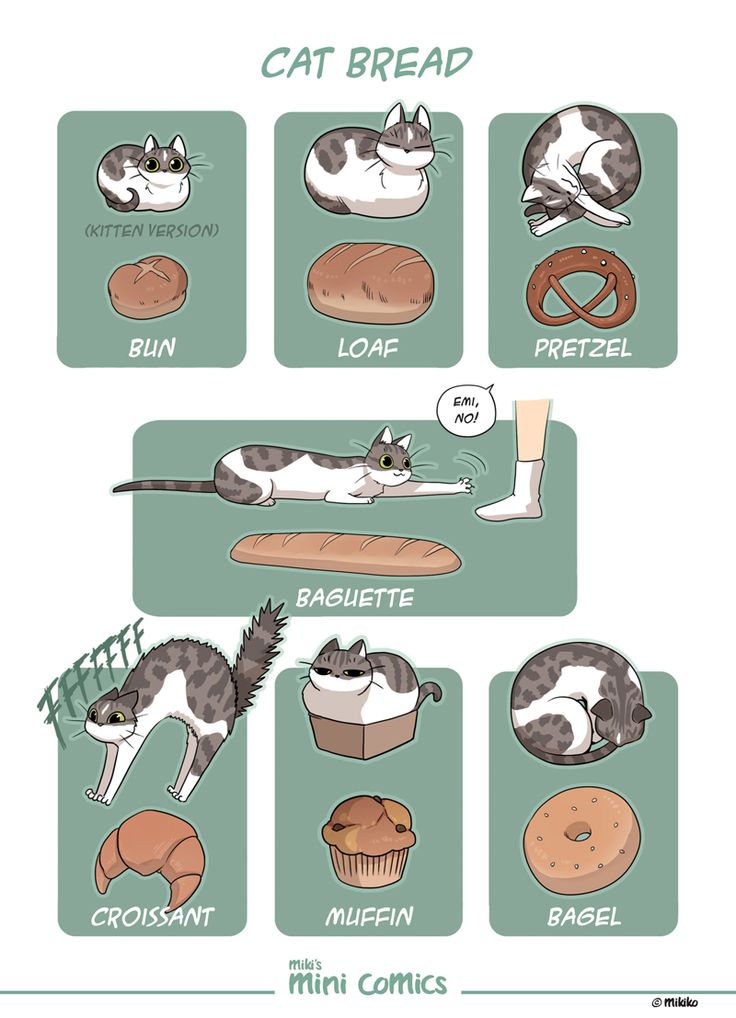
Bread can also serve as the base for innumerable interesting, baby-pleasing recipes.
For a breakfast rich in protein and complex carbohydrates, spread a bit of peanut butter on toast (if you’ve already successfully introduced peanuts), then top with mashed or sliced banana.
Or start your mini hipster early on the avo toast trend by serving a tablespoon of mashed avocado on whole wheat.
At lunch or dinnertime, try topping toast with savory mashed sweet potatoes dusted with cinnamon or a layer of smashed chickpeas with fresh dill.
To make sandwiches and toast even more appealing to toddlers, use cookie cutters to cut them into fun shapes.
From an early age, it’s totally fine to feed babies bread made from a variety of grains.
With endless prep options at breakfast, lunch, or dinner, “daily bread” can quickly become a reality for your child.
When Can Babies Eat Bread? Safety, Precautions And Recipes
Bread can be among the first foods and can be served with other dishes and preparations.
Research-backed
MomJunction believes in providing reliable, research-backed information to you. As per our strong editorial policy requirements, we base our health articles on references (citations) taken from authority sites, international journals, and research studies. However, if you find any incongruencies, feel free to write to us.
Image: Shutterstock
Parents, especially new ones, often appear to struggle with determining what to feed their infants. Bread for babies can be considered as the first food as it contains a variety of nutrients such as carbohydrates, dietary fiber, and micronutrients. It is made from wheat flour and is a common food for many people worldwide.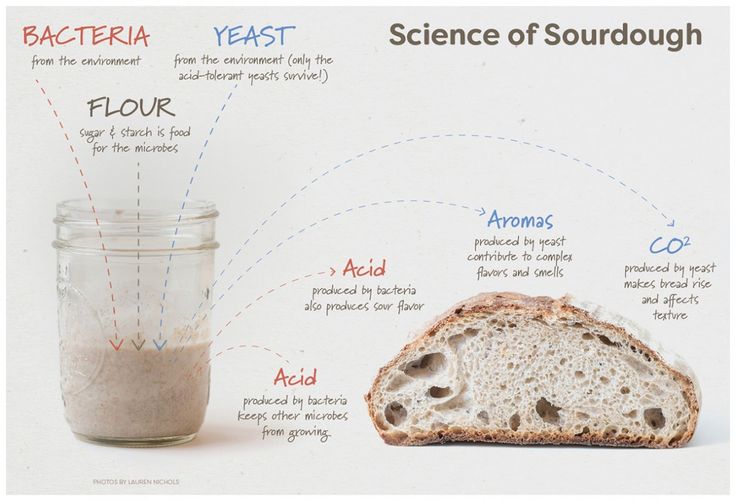 However, because wheat is a common allergen, take measures while feeding wheat bread to babies for the first time (1).
However, because wheat is a common allergen, take measures while feeding wheat bread to babies for the first time (1).
This post discusses the nutritional content of bread, when you should start feeding your baby wheat bread, and what precautions you should take when feeding it to babies.
Is It Safe To Give Bread To Babies?
Yes, bread is safe for babies. Experts recommend feeding 100% whole-wheat bread as it can provide considerable amounts of carbohydrates, protein, dietary fiber, and essential micronutrients, like iron, zinc, and thiamin (2). However, while adding it to your baby’s weaning diet, check for possible sensitivity or allergic reactions, especially if you or anyone in your family has a history of allergies.
Babies with a confirmed wheat allergy should avoid all wheat products, including baby cereals, bread, pasta, and crackers. Most infants outgrow wheat allergy within early childhood (3) (4).
Look for breads that do not contain any additives and preservatives such as BHA, BHT, wheat gluten. Choose the breads that have ingredients such as whole sprouted grains and seeds with minimal or no added oil.
Choose the breads that have ingredients such as whole sprouted grains and seeds with minimal or no added oil.
Related: Pasta For Babies: When To Eat And Easy Recipes To Try
When Can You Give Bread To Babies?
According to the UK National Health Service, you can introduce bread to babies from the age of six months (5). Bread can be among the first foods when a six-month-old begins eating solids. Pick fresh, 100% whole-wheat bread without any seeds or nuts (6). Serve lightly-toasted bread, cut in small pieces that are easy to swallow for a baby without the risk of choking.
Nutritive Value Of Bread
Below is the proximate composition comparison of one medium-sized slice of refined bread, whole wheat bread, and enriched bread (7) (8) (9). Whole-wheat bread is made from whole-wheat flour that contains all the nutritious parts of the wheat grain, namely bran, germ, and endosperm, while refined wheat flour only contains the endosperm. Enriched bread is made from enriched flour, which is refined flour fortified with nutrients that were lost during the milling process.
| Name | Whole-wheat bread | Refined bread | Enriched bread |
|---|---|---|---|
| Energy (Kcal) | 90.7 | 74.5 | 69.9 |
| Protein (g) | 4.48 | 2.48 | 2 |
| Carbohydrate, by difference (g) | 15.4 | 13.8 | 13 |
| Fiber, total dietary (g) | 2.16 | 0.756 | 0 |
| Calcium, Ca (mg) | 58 | 40.3 | 25 |
| Magnesium, Mg (mg) | 27 | 6.44 | 0 |
| Phosphorus, P (mg) | 76.3 | 27.4 | 0 |
| Potassium, K (mg) | 91.4 | 35.3 | 20 |
| Sodium, Na (mg) | 164 | 137 | 120 |
| Thiamin (mg) | 0.142 | 0.149 | 0 |
| Riboflavin (mg) | 0.06 | 0.068 | 0.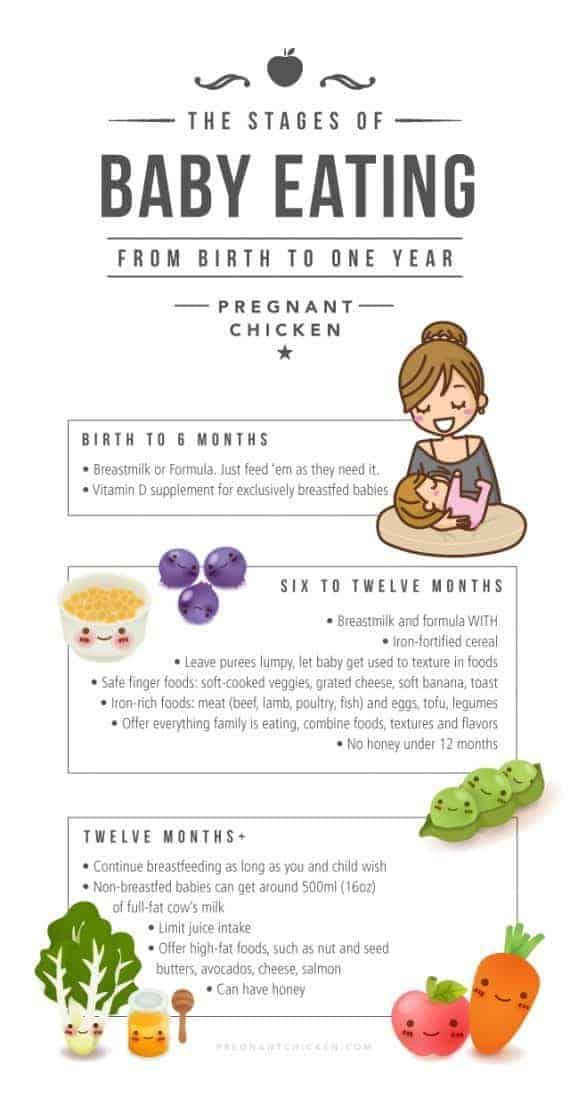 1 1 |
| Niacin (mg) | 1.6 | 1.34 | 1.1 |
| Folate, total (µg) | 15.1 | 31.1 | 25* |
| Choline, total (mg) | 9.79 | 4.09 | 0 |
Source: U.S. Department of Agriculture
Related: Wheat For Babies: Right Age To Introduce And Precautions To Take
How Much Bread Should You Give To Your Infant?
Whole-wheat bread in moderation can be an important part of a well-balanced diet. Below is the daily suggested intake for grains, including bread, for babies (10) (11).
| Age (months) | Suggested daily serving |
| 6 to 8 | 1 to 2 ounces (28-56 grams) of iron-fortified infant cereals, bread, and small pieces of crackers and half slice of whole-wheat bread per day |
| 8 to 12 | 2 to 4 ounces (56-113 grams) of iron-fortified cereals, other grains, bread, crackers, noodles, tortilla pieces, etc and one large, one medium, and one small slice of whole-wheat bread per day |
Source: NCBI and South Dakota WIC Program
Precautions To Take While Giving Bread To Babies
Here are some simple precautions to ensure the safe intake of bread for babies and toddlers.
- Prefer whole-wheat bread to refined or enriched bread. Look for “100% Whole-Wheat” labels on the bread packaging.
- Not every “brown bread” is 100% whole-wheat bread. Check the ingredients for the mention of 100% whole-wheat flour. Also, check for the percentage of whole-wheat. Use bread made from 100% whole-wheat flour.
- Avoid multi-grain whole-wheat bread since it may contain seeds and nuts. Only pick single grain (whole-wheat) bread to avoid possible allergic reactions.
- Go for low sodium and no-added sweetener varieties. Also, check for the presence of any other additives, such as food color.
- Check the manufacturing date and “best before” or “use by” date. Prefer fresh bread.
- Follow a “three to five-day wait” while introducing bread to rule out sensitivities or allergies towards wheat. Add no new food while you are feeding bread to your baby.
- General symptoms of wheat allergy are hives, wheezing, stomach ache, and diarrhea, occurring immediately after the baby eats food made with wheat (1) (3).
 Babies that experience bloating, vomiting, diarrhea, and stomach ache but no wheezing or hives are likely to have wheat sensitivity or celiac disease (12) (13). It can be hard to distinguish symptoms of wheat allergy or sensitivity from those of celiac disease (14). Therefore, stop feeding wheat products to the baby and consult a doctor for the precise diagnosis.
Babies that experience bloating, vomiting, diarrhea, and stomach ache but no wheezing or hives are likely to have wheat sensitivity or celiac disease (12) (13). It can be hard to distinguish symptoms of wheat allergy or sensitivity from those of celiac disease (14). Therefore, stop feeding wheat products to the baby and consult a doctor for the precise diagnosis.
Related: Hives On Baby: Causes, Symptoms, Treatment And Prevention
- Babies with wheat allergy or wheat sensitivity can have bread made from flours of almonds, legumes, and tubers. Take your pediatrician’s opinion before introducing these alternative options. Ancient grains such as millet, quinoa, buckwheat, and teff make nutritious breads.
- If wheat suits the baby, then feed whole-wheat bread in moderation and as part of a well-balanced diet. Overconsumption may fill up the baby’s tummy and leave no space for breast milk and other foods.
- Toast the bread and cut it into small pieces that are easy to swallow.
 If the baby does not like the bread, wait for a few days and try again. You can also introduce bread in combination with other foods, such as vegetable and fruit purees.
If the baby does not like the bread, wait for a few days and try again. You can also introduce bread in combination with other foods, such as vegetable and fruit purees. - Babies above eight months of age can consume small, bite-sized lightly toasted bread, breadsticks, bread crusts, and pitta bread as finger foods (15).
- For toddlers who eat a wide variety of solids, you can consider trying other types of bread, such as whole-grain cornbread, whole-grain or sprouted rye bread, whole-grain multi-grain bread, sourdough bread, and flax bread, after consulting a pediatrician.
Tasty Bread Recipes For Babies
You can feed bread to your baby as a simple toast or by soaking it in a small quantity of warm milk. Alternatively, you may use the following recipes.
1. Jammy bread fingers
Image: Shutterstock
Image: Shutterstock
The easy-to-prepare finger food recipe can be a part of your baby’s breakfast meal.
You will need:
- 1 whole-wheat bread slice
- 1tsp blueberry jam (or any jam of choice)
How to:
- Slice the whole-wheat bread into thin fingers.
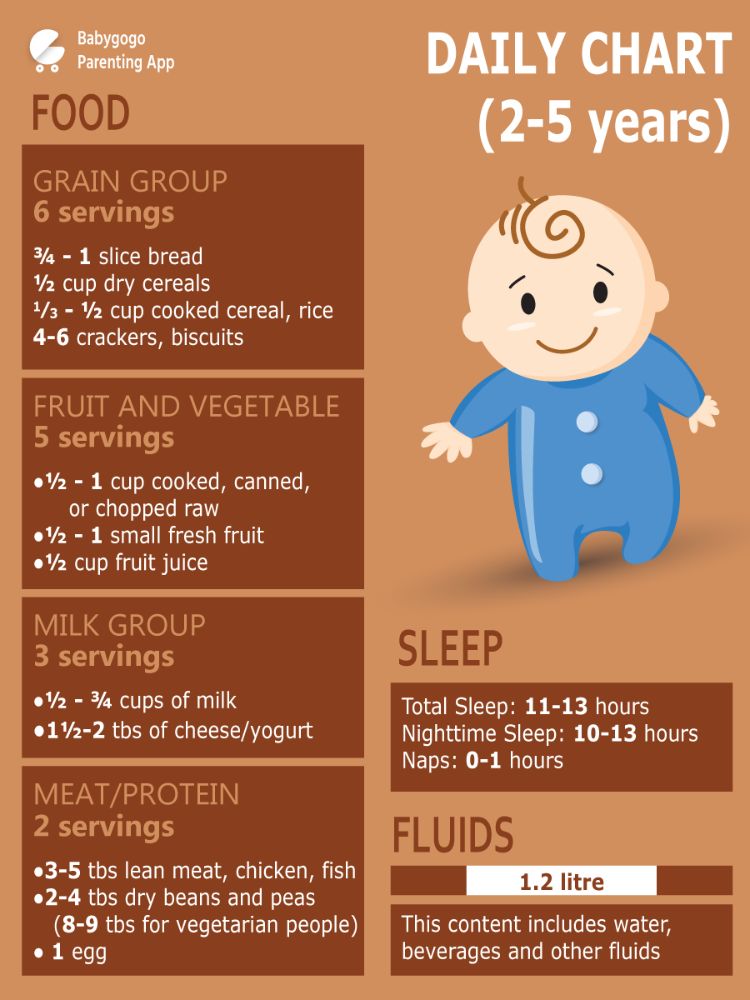
- Apply jam to these slices of bread and serve immediately.
- You can slightly toast the bread before slicing.
2. Buttery banana bread slices
Image: Shutterstock
A perfect finger food recipe made with nutritious ingredients, like fresh fruits and peanut butter. This is suitable for toddlers.
You will need:
- 1 banana bread slice
- 1tsp plain peanut butter (without peanut chunks)
- 1tbsp tiny mixed fruit pieces (mango and strawberry)
How to:
- Spread the peanut butter on the banana bread slice and decorate with tiny mixed fruit pieces.
- Serve immediately with a cup of warm milk or fresh homemade veggie juice.
- You can add toasted sesame seeds and flaxseeds to this recipe.
Related: Banana For Babies: Benefits, Precautions, & 6 Recipes To Try
3. Multi-grain French toast
Image: Shutterstock
French toast is a delicious traditional treat for babies above 12 months of age.
You will need:
- Multi-grain bread slice
- ¼tsp cinnamon powder
- 1tsp brown sugar
- 2tbsp butter
- 1 egg
- ⅛ cup whole milk
- 1tsp maple syrup
How to:
- Add cinnamon, sugar, egg, and milk in a small bowl, whisk well and set aside.
- Keep a skillet over medium heat and put butter onto it to melt.
- Dip the bread in the egg mixture and then place it on the skillet to fry.
- Fry the slice until it turns golden brown from both the sides.
- Drizzle some maple syrup and serve the French toast while still warm.
4. Cheesy mini sandwiches
Image: Shutterstock
Mini sandwiches are a healthy snack option for babies and toddlers.
You will need:
- 2 whole-wheat bread slices
- 1tsp mint sauce
- 1tsp tomato sauce
- ¼ cup cucumber (grated)
- 1tbsp cream cheese
How to:
- Take a small mixing bowl and mix mint sauce, tomato sauce, and cream cheese in it.
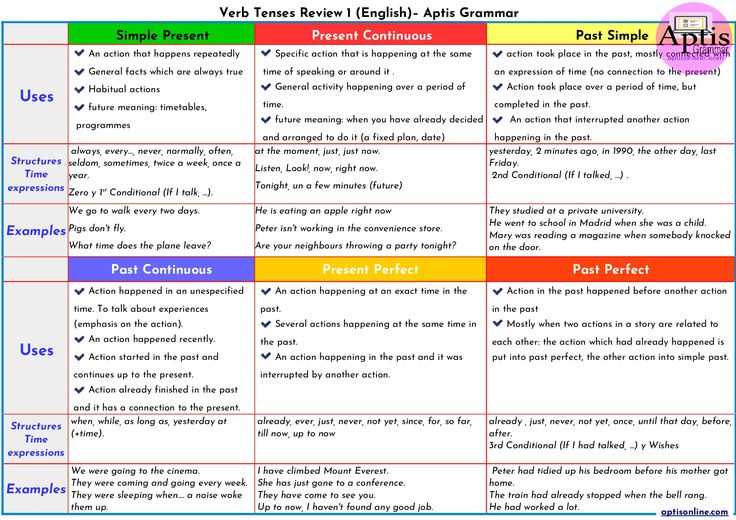
- Spread a thick layer of the mixture to one slice, top with grated cucumber, and cover with another slice.
- Press the sandwich gently and cut it into four small squares.
- Serve immediately with fresh vegetable juice or a cup of warm milk.
- You can also add cooked cottage cheese to this recipe to intensify its nutritional value.
Related: Cheese For Babies: When To Introduce, Benefits And Recipes
5. Bread upma
Image: Shutterstock
A healthy and delicious recipe suitable for babies above ten months of age.
You will need:
- 1 cup crumbled whole-wheat bread
- 2tbsp peanuts
- 1tsp lemon juice
- 1 small onion (chopped)
- 1 small tomato (diced)
- 1tsp mustard seeds
- 1/4tsp turmeric powder
- 1/4tsp salt
- 1tbsp oil
- 4-5 curry leaves
How to:
- Put oil in a thick bottom pan, add peanuts, and fry them for ten seconds.
- Add mustard seeds, curry leaves, and onion and fry until onions turn golden brown.

- Now, add tomato, turmeric, and salt, and cook for five minutes.
- Add crumbled bread to the mix and give a nice toss. Cook for five minutes with the lid closed.
- Transfer the cooked bread upma to a serving plate, add lemon juice, and serve.
Alternatives Of Bread For Babies
Some food items that can be alternatives to bread for babies are:
- Whole-wheat pancakes
- Oats pancakes
- Millet pancakes
- Whole-wheat chapatis
- Corn tortillas
1. Can I feed white bread to my baby?
White bread is softer in texture than whole wheat or millet bread. Thus, several parents prefer to feed white bread to babies. However, it is essential to note that the content of fiber, protein, and several other nutrients, such as magnesium, phosphorus, and potassium is relatively less in white bread (7) (8) (9). Hence, it is good to feed whole wheat bread to babies. However, you can also feed them enriched white bread occasionally.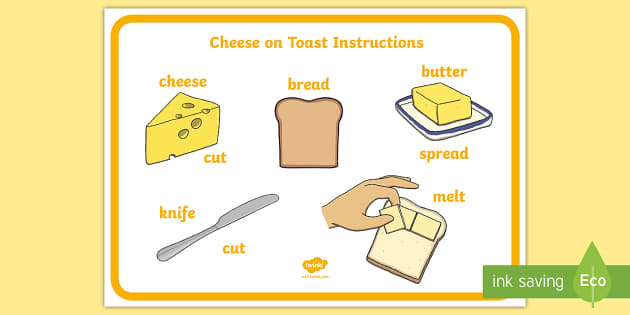
2. When can my baby eat bread and butter?
Babies can eat bread and butter from six months of age. You can use unsalted butter and apply it on lightly toasted bread slices that babies can eat as finger foods and practice self-feeding. Alternatively, you can add small amounts of butter to purees, mashed foods, and porridge to enhance the food’s flavor (16). However, keep the use of butter minimal as excessive butter intake isn’t good for long-term health.
Bread for babies can be a great first food because of its nutrient-rich components. It is prepared from wheat flour and contains carbohydrates, dietary fiber, and minerals. While several types of bread are available, 100% whole-wheat bread and bread made with diverse grains, legumes, and seeds are preferred. However, since wheat is a common allergen in babies, follow a “wait rule” when introducing bread to babies to watch out for any adverse reactions. You should also search for bread that is free of additives and preservatives.
Key Pointers
- Whole wheat bread provides multiple nutrients to the babies.
- As per the UK National Health Service, you can introduce bread to six-month-old babies.
- Knowing the right ways to include bread in their routine is the key.
References:
MomJunction's articles are written after analyzing the research works of expert authors and institutions. Our references consist of resources established by authorities in their respective fields. You can learn more about the authenticity of the information we present in our editorial policy.
1. Common Food Allergies; Healthy Children; American Academy of Pediatrics
2. Whole Grains Fact Sheet; International Food Information Council Foundation
3. Wheat Allergy; American College of Allergy, Asthma & Immunology
4. Cereals and Grains; University of Nebraska Lincoln
5. Your baby’s first solid foods; NHS
6.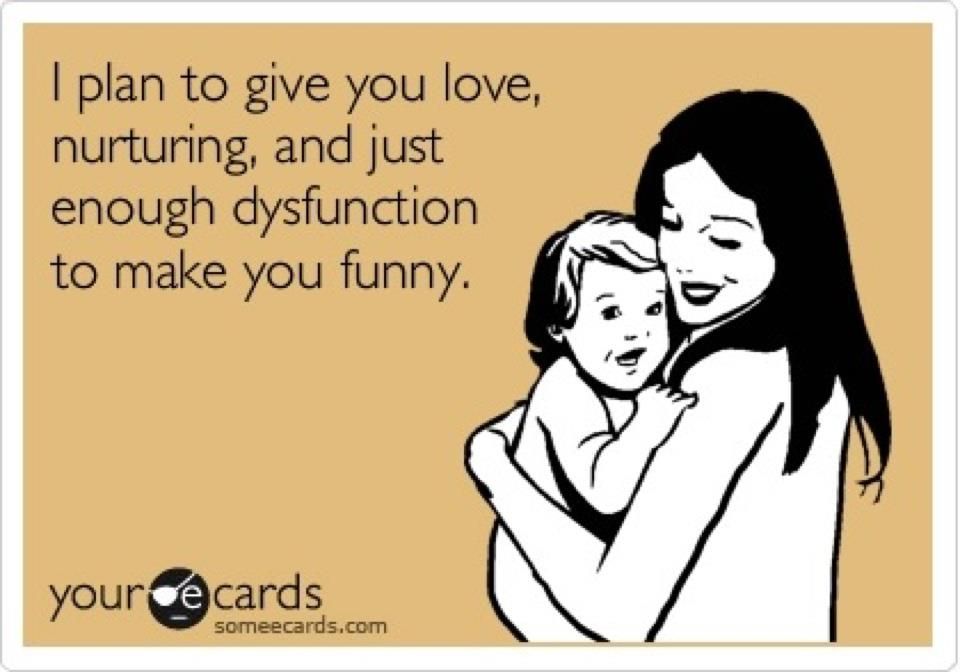 Choking Hazards; CDC
Choking Hazards; CDC
7. Bread, whole wheat, FDC ID: 784596 ; Fooddata Central, USDA
8. Bread, white; FDC ID: 784477; Fooddata Central, USDA
9. Enriched bread; Fooddata Central, USDA
10. Michelle Klerks, et al.Infant Cereals: Current Status, Challenges, and Future Opportunities for Whole Grains, Nutrients (2019).
11. Feeding Guide: 6-12 Months; South Dakota Department of Health
12. Should you cut out bread to stop bloating?; NHS13. Symptoms of Celiac Disease; Celiac Disease Foundation
14. Myth vs. fact: Celiac disease vs. wheat allergy; Food Allergy Canada
15. Weaning your baby; Government of UK
16. FOOD FOR 6 TO 24 MONTHS OLD CHILDREN; UNICEF
The following two tabs change content below.
- Reviewer
- Author
6-Month-Old Baby's Food Chart And Recipes
6-Month-Old Baby's Food Chart And Recipes
Peppermint Tea During Pregnancy: Safety, Benefits And Side Effects
Peppermint Tea During Pregnancy: Safety, Benefits And Side Effects
Is It Safe To Eat Chinese Food During Pregnancy?
Is It Safe To Eat Chinese Food During Pregnancy?
Is It Safe To Drink Soft Drinks During Pregnancy?
Is It Safe To Drink Soft Drinks During Pregnancy?
Top 25 Bread Recipes For Kids That You Can Try Today
Top 25 Bread Recipes For Kids That You Can Try Today
Can You Take Tums During Pregnancy For Heartburn and Nausea?
Can You Take Tums During Pregnancy For Heartburn and Nausea?
What Are The Effects Of Eating Junk Food In Kids?
What Are The Effects Of Eating Junk Food In Kids?
13 Excellent Benefits Of Avocados During Pregnancy
13 Excellent Benefits Of Avocados During Pregnancy
Oatmeal For Babies: Types, Benefits, And Recipes To Try
Oatmeal For Babies: Types, Benefits, And Recipes To Try
at what age to introduce complementary foods
Bread is the product without which many families simply cannot imagine breakfast, lunch or dinner.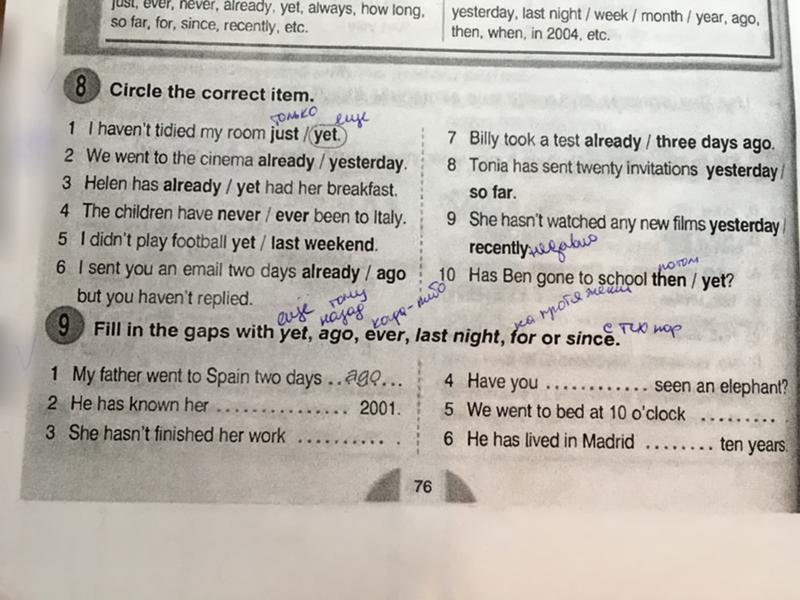 But the product is not given to children immediately, but at a certain period of introducing complementary foods, when the baby is already ready to chew and assimilate it. In addition, there is a difference in the timing of the introduction of dark and white varieties, muffins. Some parents generally ask themselves the question - is it necessary to feed these products to children or can you do without them? Can bread or sweet pastries harm a child's digestion, weight or metabolism? All these questions require detailed answers. nine0003
But the product is not given to children immediately, but at a certain period of introducing complementary foods, when the baby is already ready to chew and assimilate it. In addition, there is a difference in the timing of the introduction of dark and white varieties, muffins. Some parents generally ask themselves the question - is it necessary to feed these products to children or can you do without them? Can bread or sweet pastries harm a child's digestion, weight or metabolism? All these questions require detailed answers. nine0003
What is bread, how is it baked? The simplest recipe has only water, flour, salt and yeast. But the recipe can be expanded by adding vegetable oil, whole or powdered milk, whole grains, sugar, seeds, eggs and other ingredients to the dough. This is how other types of bread are obtained. Flour can be used both wheat and rye, as well as buckwheat, corn or a mixture of several types.
Benefits and harms of bread for a child
It would seem that a product that we have considered a traditional dish of our cuisine since childhood cannot have negative properties, but there are some peculiarities in relation to children's nutrition. Like any other product, bread in its different versions has both beneficial and harmful properties.
Like any other product, bread in its different versions has both beneficial and harmful properties.
Among the undoubted advantages are:
- Balanced composition. It has vegetable proteins, complex carbohydrates and very little fat. nine0016
- Traditional varieties contain more vitamins - these are B1, B2, PP, B6, vitamin E, as well as trace elements - magnesium, potassium, calcium, phosphorus, iron, manganese and others.
- Rye, in addition to B vitamins, also contains a large amount of dietary prebiotic fibers and minerals.
- Pleasant smell that stimulates the digestion process.
- Bran or whole grain, with the addition of seaweed, sesame or flaxseed, additional components - such bread supplies the body with the necessary compounds - prebiotics. nine0016
- Due to complex carbohydrates, the product saturates well, is digested for a long time, allowing the child to stay full longer.
With all the positive aspects, the consumption of an excess amount of bread can negatively affect the state of the body.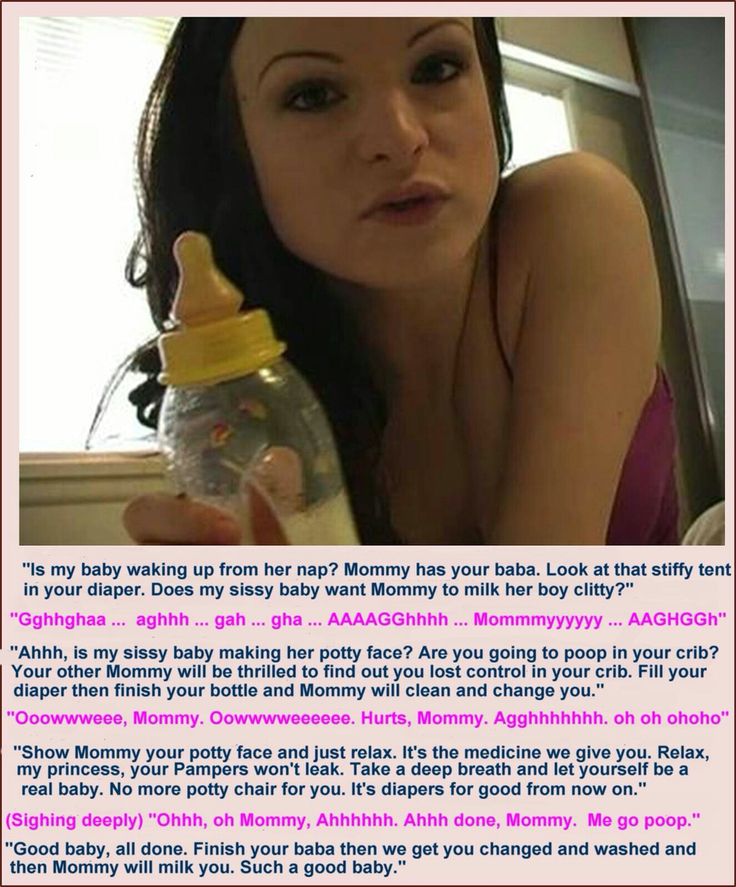 It is especially important to know the possible negative aspects for parents of babies up to 1.5–2 years old:
It is especially important to know the possible negative aspects for parents of babies up to 1.5–2 years old:
- A large amount of oligosaccharides, due to the lack of specific enzymes, is very difficult to digest. Therefore, children under one and a half years old are not recommended to give Borodino and dark yeast-free bread. nine0016
- Traditional wheat bread contains gluten. This is a cereal protein, which in some children and adults can cause two pathological conditions - allergies and celiac disease. Some children may have allergic reactions to milk proteins or eggs added to some types of bread.
- White loaves, buns, rolls, made from premium wheat flour with sugar and butter, contain few useful components, since during the processing the flour loses most of the vitamins and mineral components. In addition, white rolls are a source of a large number of calories. These products are not recommended for children under 2-3 years of age. nine0016
- Fresh bread, just taken out of the oven, is fragrant and tasty, but it is not recommended for children under three years old, because it contains a lot of gluten.

- Toasted bread that is slightly stale can be harmful to babies who do not chew well. Large pieces can cause the child to choke.
- If the baby constantly snacks on bread, he may eat other foods worse. The product is high-calorie, it suppresses appetite, so children can refuse more healthy dishes from vegetables, meat, fish. nine0016
- If a child eats a lot of dark breads, the absorption of iron in the intestines becomes difficult, which can lead to the development of anemia.
When and how much bread can be given to a child?
The first products from the bakery group can be offered to your baby at the age of 7-8 months. It can be baby cookies, drying, white crackers. White bread itself appears in the diet at 8-9 months.
At the very beginning of complementary foods, it is introduced in the amount of 3-5 grams per day. By nine months they offer 5 grams, at 10 months - 10 grams of white. nine0003
From the age of one, the amount of white bread per day is gradually increased. If bloating, colic, restlessness or stool disorders occur during the introduction of a new product, the introduction of the product should be stopped for a while.
If bloating, colic, restlessness or stool disorders occur during the introduction of a new product, the introduction of the product should be stopped for a while.
Dark varieties and various variants of bakery products with additives (bran, seeds, whole grains) are recommended to be gradually introduced from 1.5–2 years. The maximum volume of black bread up to two years is about 10 grams.
The most useful varieties for baby
Today the bakery industry can produce special varieties - gluten-free, steam-free, yeast-free, reduced in starch, protein or salt. But in childhood, especially for the first complementary foods, it is better to prefer those varieties that are baked according to the traditional recipe.
Among the most useful varieties are traditional white bread and baked bread. They are offered to the child in the first place. After two years, you can give any kind, but it is important to ensure that they do not contain various components of food chemistry - baking powder, stabilizers, preservatives. nine0003
nine0003
When can you give your child bread and how to do it correctly
Contents
- 1 Child's diet and bread
- 2 What does bread consist of
- 3 Benefits of bread
- 4 Harmful bakery products for children
- 50th time for children introduction of complementary foods
- 6 Rules for introducing complementary foods
- 7 Rules for choosing and storing
- 8 Bread with bran for children
- 9 How to bake bread?
- 10 Child does not want to eat bread or only eats bread
Bread has become perhaps the most popular product that can be found in every home. In this regard, young mothers are thinking about the question of when this product can be added to the baby's menu. It is important when you can give bread to a child and the optimal amount of bread for the correct and timely feeding.
Child's diet and bread
Doctors advise adding grain products to the child's menu up to five times a day in the form of various cereals and bread. The latter product can provide the child's body with such useful substances as:
The latter product can provide the child's body with such useful substances as:
- carbohydrates - 60-65%;
- vegetable proteins - 15%;
- fats - 25-30%.
Wheat, oat and rye bread will be a real find for a child's organism due to the content of:
- trace elements;
- vitamins;
- starch, which is converted into glucose in the body.
A large amount of useful substances means the usefulness of bakery products for a child's body, but it is important to correctly introduce them into the baby's diet in order to avoid negative consequences. nine0003
What bread is made of
The child will be interested to know that simple bread is made of flour, water, yeast and salt. Often vegetable oil, eggs and milk are added to it for expansion. The taste of this product can be varied due to the addition of seeds, raisins, butter, and so on.
The process of making bread can be interesting not only for adults, but also for kids. Children can get acquainted with the question of cooking bread from special books and videos. These videos will help your child expand their horizons. nine0003
Children can get acquainted with the question of cooking bread from special books and videos. These videos will help your child expand their horizons. nine0003
Benefits of bread
Modern mothers have more choice in buying bread than our ancestors. The counters are replete with varieties of this product, which you should rely on to buy a product for your baby. It is important to know as much as possible about the characteristics of different types of bread so that the product brings only benefits to the baby, and not allergies and problems with the gastrointestinal tract.
- White bread is made from wheat flour, and the intensity of grinding determines the amount of important vitamins in the final product: the more intense the grinding, the less they are. nine0016
- Crackers and crispbread are low-calorie foods rich in fiber: they are a godsend for children who need to lose weight.
- Oatmeal and soy flour are excellent ingredients for making dietary products, but they are not suitable for introducing complementary foods.
 The fact is that such a product can provoke an allergy in a child. The same applies to varieties of bakery products baked with the addition of eggs. nine0016
The fact is that such a product can provoke an allergy in a child. The same applies to varieties of bakery products baked with the addition of eggs. nine0016
- Rye bread is a storehouse of nutrients and fiber, which bring great benefits to the body. Rye bread is rich in vegetable proteins, carbohydrates and vitamins. In addition, rye bread is a supplier of dietary fiber and B vitamins, useful for the nervous system, hair, skin and other body systems. And the pleasant aroma of freshly baked bread provokes the production of food juice due to the excitation of appetite.
Harmful bakery products for children
Despite the abundance of the most useful microelements and the range of health benefits of bread and crackers, this product can cause not the best consequences for the baby's health.
- Oligosaccharides are not suitable for children's diet due to the fact that this enzyme is not processed in the child's body
- Wheat bread containing eggs is a storehouse of gluten, which tends to cause various allergic reactions in the child.

- A bun made from white flour, sugar and butter does not contain enough vitamins, but it can harm the child's body in the form of excess weight.
- Freshly baked products contain gluten and are therefore not suitable for babies. It's best to leave the bread to dry naturally for a few days, or place it in a toaster and then serve it as a treat.
- Babies who chew badly should not be given bread as they may choke on the product. nine0016
- During lunch, a child may refuse vegetables and the main course due to the fact that bread interrupts the appetite.
- Black bread causes anemia: that is why it is important to take precautions when tasting the black variety.
The ideal time to introduce complementary foods
Now let's figure out how many months you can start giving bread. Seven months of age is the best period for introducing baby crackers and light cookies for children into the diet. During this period, it is recommended to feed the baby with a crust of bread. nine0003
During this period, it is recommended to feed the baby with a crust of bread. nine0003
At the age of eight months, you can give your child bread already with crumb, but no more than three to five grams per day. The same amount of bread can be eaten at the age of nine months, and at 10 months the portion of bread is increased to ten grams per day.
From one year the amount of bread in the children's diet increases. However, if, after using a new product, the child begins to feel bloating, abdominal cramps, stool disorders and anxiety are traced, you should immediately consult a doctor. The specialist will make the necessary adjustments to the diet of a small patient. nine0003
At the age of one and a half, a child can eat ten grams of the black variety. At two years old, it is allowed to consume 100 g of bread per day, namely: 70 g of wheat and 30 grams of rye. For a snack, it is recommended to give the child a piece of black bread soaked in olive oil - such an appetizer improves the child's stool and perfectly kills the appetite.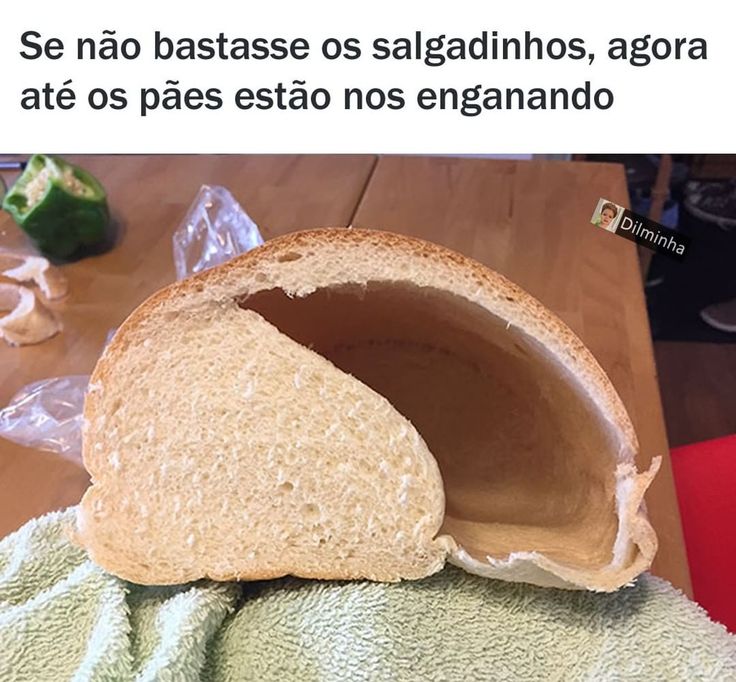 A first-grader can eat two hundred to three hundred grams of bread a day, and a black variety is allowed in the amount of 75-150 grams.
A first-grader can eat two hundred to three hundred grams of bread a day, and a black variety is allowed in the amount of 75-150 grams.
Complementary feeding rules
In order for feeding to be successful, it is important to adhere to several rules:
- Under no circumstances should you violate the instructions of doctors about how many months babies can eat bread. Children should not be given bread and crackers before nine months.
- Bread offered to a child must not be freshly baked. It is better to dry the pieces in the oven, or leave on the windowsill to dry naturally. In this issue we are talking about gluten, which adversely affects the health of the child. nine0016
- If the baby is overweight, do not offer him pieces of bread dipped in butter.
- A child should not eat bread with meat or fish dishes: such a combination of products will provoke fermentation in the baby's intestines.
- The combination of bakery products, sugar and jam also negatively affects the children's body.
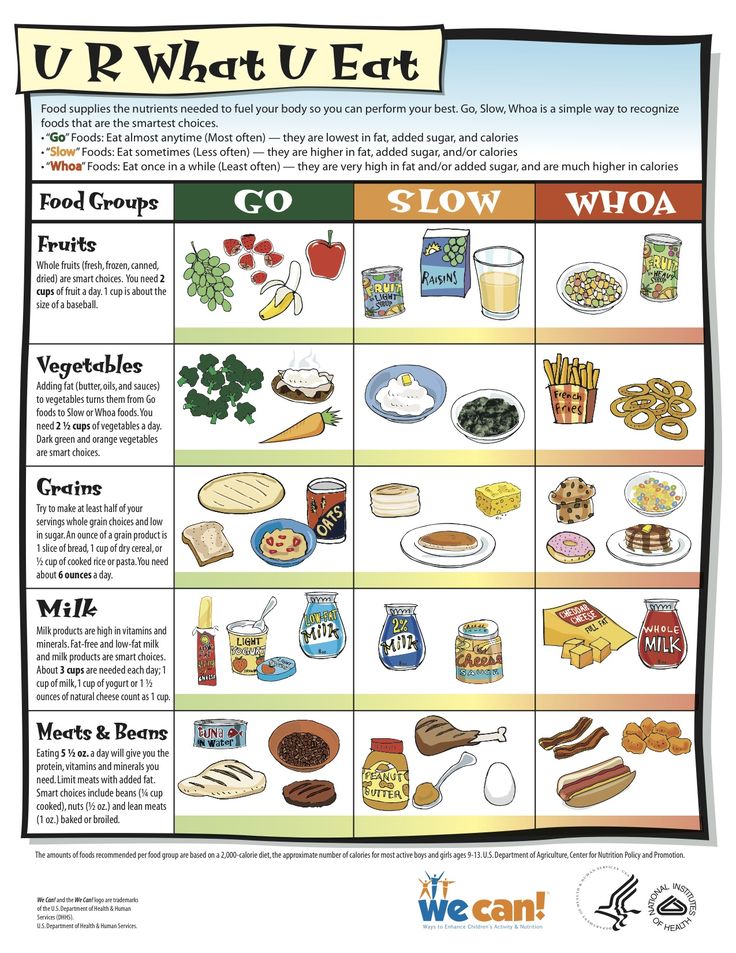 Instead of eating a lot of sugar, place a cucumber or cottage cheese mass on a piece of bread. nine0015 Such products abound in PP vitamins, which have a beneficial effect on the gastrointestinal tract. However, this variety of bakery products is not recommended for children with increased secretion of gastric juice.
Instead of eating a lot of sugar, place a cucumber or cottage cheese mass on a piece of bread. nine0015 Such products abound in PP vitamins, which have a beneficial effect on the gastrointestinal tract. However, this variety of bakery products is not recommended for children with increased secretion of gastric juice. - Long loafs and buns with seeds, nuts and dried fruits are relevant for babies aged three years and over. Younger children can choke on such bread or “earn” allergies.
- French baguettes are too high in calories, so they are not suitable for a children's menu. Children over the age of two years can use it in an amount of no more than one hundred grams per week, and for crumbs it is completely prohibited. nine0016
- A child may choke on a new treat, so it is important to know the intricacies of the first complementary foods. The very first serving of bread can be mixed with breast milk so that the bread looks like porridge. In this form, the product will not be able to enter the respiratory tract of the child.

- Some pediatricians say that before weaning, you should feed your baby with a stalk of celery, which will provoke the chewing reflex in the baby. After these procedures, you can give the child a piece of bread for sucking. nine0016
- The first piece of bread can be offered to the child in the first part of the day to monitor for possible allergies. Dip a piece in soup, baby food or puree and hand it to your child. If the child refuses a new treat, do not force him to eat.
- It should be remembered that only a crust of bread, not a crumb, can be given as complementary foods to a baby. The baby will suck on the crust, but the mother must watch him so that he does not bite off the treat. You should stay close to the child until he independently learns to chew and swallow the product. However, children learn quickly, so over time, the baby will begin to cope on his own. nine0016
Selection and storage rules
When purchasing bread, it is important to pay attention to the expiration date and appearance of the bakery product. Bread should have a normal shape and color integrity (no burning). Babies under the age of three should not eat loaves, products with whole grains and bran: it is better to give preference to the usual "brick".
Bread should have a normal shape and color integrity (no burning). Babies under the age of three should not eat loaves, products with whole grains and bran: it is better to give preference to the usual "brick".
The answer to the question of at what age bread can be given also depends on whether any flour was added to the bread, other than the traditionally used wheat and rye. nine0003
Bread that contains cornmeal should not be eaten by children under 9 months of age because such flour can upset the baby's acid-base balance.
But buckwheat flour can be introduced into the baby's diet. It is perfect as a complementary food for a child from 6 months. From the same age, you can give your child bread, which contains wheat flour and a small amount of buckwheat flour.
Baby bread should not be too salty. By adding too much salt, private bakeries sometimes sin. Bread from the bakery is not forbidden, but it's a must to try it yourself to make sure it's not too salty. nine0003
nine0003
The product can be stored for 24-36 hours, and each variety must be stored separately. Do not forget to ventilate and wipe the bread box with vinegar.
Children's bran bread
Bread with bran, seaweed, flaxseeds and sesame seeds is a source of minerals and fibre.
Bran bread is recommended for children over two years of age. From this period, a product made from wholemeal flour and bran is suitable for a child's diet, since it has fiber and proteins that strengthen the body's defenses and have a beneficial effect on the gastrointestinal tract. In this matter, it is important to combine products correctly so that their combinations do not cause fermentation in the intestines, and, consequently, bloating, colic, and problems with stools. nine0003
Products made from wholemeal and bran are slowly absorbed, but they help cleanse the body of toxins. Their benefits are the determining factor in the introduction into the children's diet. But doctors do not recommend systematically giving it to a small child.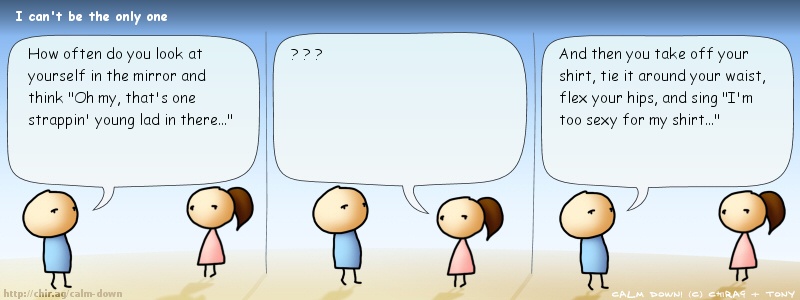
What kind of bread to give the child - regular or with bran - should be decided in consultation with the pediatrician, taking into account the child's health. For example, bran bread can be useful if the doctor determines that the child is obese.
The bran bread that you give your child must be fresh (but, of course, it must not be freshly baked either). The fact is that the fats that are present in bran oxidize during long storage, and this leads to faster spoilage of such bread. nine0003
How to bake bread?
Often young mothers want to bake their own bread in order to be sure of the ingredients. The easiest way to bake bread is in the oven, but a conventional oven is also suitable for this. The final dish will impress every baby, because the bread will be baked by loving mother's hands. The process of creating baking will help the mother not only prepare a safe and healthy product, but also add a piece of mother's heart and care to it.
The very first piece of bread for a baby can be baked, for example, from the following set of ingredients:
- wheat flour - 450 g;
- 1.
 5 spoons of yeast;
5 spoons of yeast;
- two tablespoons of vegetable oil;
- level teaspoon of salt.
Fresh yeast can be melted in warm water or milk.
The child does not want to eat bread or eats only bread
If the child refuses treats, do not force-feed him bread. It is important to pay attention only to ensure that the child consumes enough porridge, which is a supplier of valuable vitamin B.
You should not worry about giving up bread if, in addition to this product, the child's body is sufficiently well saturated with useful substances. A person can refuse bread if he consumes enough meat, dairy products, fruits, vegetables and fish dishes. And in the case of an allergy to bread in a child, bread is completely contraindicated for him.
It can also happen the other way around: the child only eats bread and other flour-based products (pasta, biscuits, etc.). In such a situation, pediatrician E.A. Kozynkina-Marchenko recommends not to follow the baby's lead and stop giving him bread and cookies, because otherwise it will simply not be possible to transfer him to another diet.


